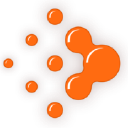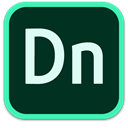Uncovering the Best Maxwell Alternatives for Photorealistic Rendering
Maxwell Render has long been a benchmark in next-generation rendering technology, celebrated for its unparalleled ability to produce photorealistic images and its leadership in unbiased rendering. Its advanced lighting capabilities have made it a go-to for architecture, interior design, product design, and film/animation. However, if you're exploring new horizons, seeking different features, or looking for a more tailored solution, a range of powerful Maxwell alternative software options are available. This article delves into the top contenders that can meet and even exceed your rendering needs.
Top Maxwell Alternatives
Whether you're a professional designer, an architect, or an animator, finding the right rendering engine is crucial for bringing your visions to life. The following alternatives offer diverse approaches to photorealistic rendering, catering to various budgets, platforms, and feature requirements.

LuxCoreRender
LuxCoreRender is a physically based and unbiased rendering engine that simulates the flow of light according to physical laws. It's a fantastic Maxwell alternative, offering high-quality results for free and as open-source software, available on Mac, Windows, and Linux.

Keyshot
KeyShot is an interactive raytracing and global illumination program developed by Luxion. It simplifies the process of creating photographic renderings, making it an excellent commercial Maxwell alternative for both Mac and Windows users, and includes powerful 'Studio' features.

appleseed
appleseed is a modern, open-source, physically-based rendering engine designed for photorealistic images, animations, and visual effects. As a free and open-source Maxwell alternative for Mac, Windows, and Linux, it offers a 'Portable' feature, making it highly versatile.

RenderMan
PhotoRealistic RenderMan (PRMan) is a proprietary photorealistic RenderMan-compliant renderer, primarily using the REYES algorithm. It’s a robust Maxwell alternative, available on Mac, Windows, and Linux, offering features like a 3D renderer and high-resolution image output, with a free personal license option.

Adobe Dimension
Adobe Dimension allows graphic designers to create high-quality, photorealistic images with its intuitive 3D tools. Part of Adobe Creative Cloud, it's a commercial Maxwell alternative for Mac and Windows, boasting features like 3D modeling and HD rendering.

Mitsuba
Mitsuba is an extensible rendering framework written in portable C++, implementing both unbiased and biased techniques. This free Maxwell alternative for Mac, Windows, and Linux is a powerful physically based renderer, ideal for research and development.

V-Ray
V-Ray is a complete rendering solution widely used in architectural visualization, product design, and visual effects. Available commercially for Mac, Windows, and Linux, and integrating with popular software like 3ds Max, Revit, and SketchUp, it's a top-tier Maxwell alternative known for its speed and versatility.

Sunflow Rendering System
Sunflow is an open-source rendering system for photo-realistic image synthesis, written in Java. Built around a flexible ray tracing core, this free and open-source Maxwell alternative for Mac, Windows, and Linux is a great choice for those seeking a customizable and extensible Java-based solution.

Indigo Renderer
Indigo Renderer is an unbiased, physically based, and photorealistic renderer that simulates the physics of light for near-perfect image realism. As a commercial Maxwell alternative available for Mac, Windows, and Linux, it offers advanced material models and a focus on physical accuracy.
Each of these Maxwell alternatives brings unique strengths to the table, from open-source flexibility to commercial-grade power and specific integration capabilities. We encourage you to explore their features, test their workflows, and choose the rendering engine that best aligns with your creative vision and technical requirements.